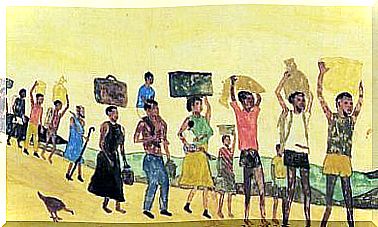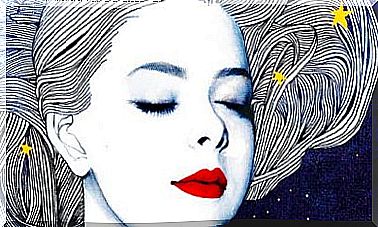The Secret Of The Golden Flower: The Chinese Taoist Book On Meditation
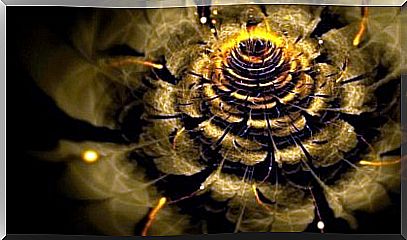
The Secret of the Golden Flower is a book on meditation and Chinese alchemy translated by Richard Wilhelm and commented on by Carl Jung. It alludes to a metaphor by which each one of us is obliged to awaken, to open our consciousness towards the Light, a primordial opening symbolized through the golden flower, a center of power where everything circulates and transcends.
To speak of this work is to refer to one of the most important but also the most controversial texts on the Taoist religion. The book of The Secret of the Golden Flower is a “westernized” translation of one of the most important spiritual legacies of Asia. Thus, and as happened with The Tibetan Book of the Dead , many details were simplified to turn it into a manual on Chinese yoga that the Western world could understand perfectly.
However, it is much more. It is known that the first testimony of this text has its roots in the 7th century, in some wooden boards. It was an ancient Chinese treatise on esotericism that was transmitted orally. Its principles, its codes and wisdoms were collected by a member of the so-called Religion of Light, whose leader was Lu Yan. It is thought that all these methods described go back to ideas that already arose in Persia and that have their roots in the Egyptian hermetic tradition.
It is as we see, a book of great significance. Now the complexity of their religion is immense. It speaks of that alchemical process by which we would illuminate the abode of spiritual consciousness. To do this, we must put our attention on an internal sacral enclosure, on that golden flower that is both our origin and our goal. For their part, and although Wilhelm and Carl Jung left some concepts behind, they managed to offer us a work where we could initiate those ideas, that philosophy.
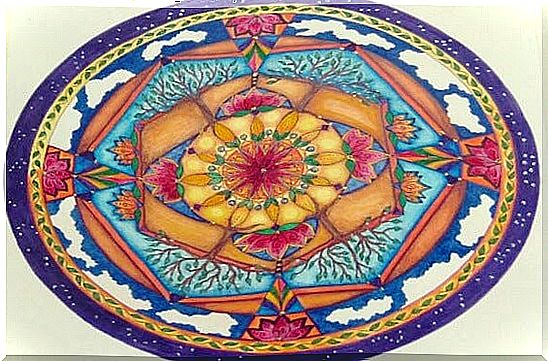
The secret of the golden flower, an inner search
Carl Jung tells in his memoirs that he was always interested in oriental philosophy. It was around 1920 when he began to experiment with the I Ching, deepening almost without realizing that ancestral wisdom, that figurative language and those oriental traditions that so captivated him. It was precisely in those years that he met Richard Wilhelm, an eminent German sinologist, theologian and missionary, who specialized above all in translating works from Chinese into German.
The idea of translating the book La flor de oro started from there, after a first meeting at the “School of Wisdom” and later at the psychology club. In 1923 the work came to light with Jung’s foreword and comments. In 1931 Carl Baynes translated it into English and it did not take long to go around the world to become, in some way, that book that many had at the head of their bed and that talked about Chinese yoga. However, does the secret of the golden flower really speak only of yoga and meditation? Absolutely.
The importance of developing our particular golden flower
The original title of the book came to say something like “Instructions to develop the golden flower . ” To understand the purpose of this book we must first know what the golden flower is.
- The golden flower is a metaphor, but a metaphor that refers to a type of alchemy, to an internal transformation.
- Taoist philosophy affirms that there is a spiritual energy that transcends all of us. A light that symbolizes our conscience.
- To awaken that light or our golden flower, we must carry out a series of meditations and exercises that in the original text itself, they call energy alchemy.
- These continuous exercises will allow us little by little to focus our light and form (make germinate) the golden flower.
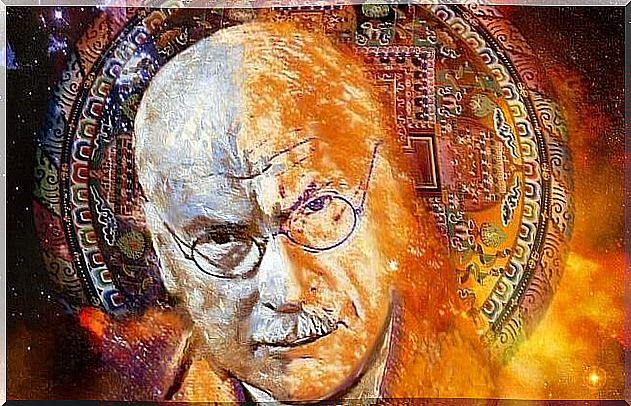
It is very possible that from our western vision, all these principles enunciated in the secret of the golden flower, seem to us somewhat distant and even strange. However, let’s put ourselves for a moment, on what caught the attention of Carl Jung. In that nuance that as a psychiatrist and pioneer in analytical psychology, captivated him for much of his life: the golden flower forces us to put aside our mind occupied and conditioned by society, to reach a higher mind, free , creative and even heavenly.
Calm the mind to open the heart
At this point many of our readers will ask a more than obvious question. What kind of alchemy / meditation must I go through to achieve that light described in the Secret of the Golden Flower ? The answer lies in something that may appear simple but that requires great dedication, practice and will: we must learn to calm the mind to open the heart.
- We can start by asking ourselves who we are. Probably, after that question and almost without realizing it, we will visualize our face. However, what defines what we are is not our body: it is thoughts. And most likely, they talk too much, tell us lies and make us believe things that are not true. So it is best to silence them.
- To calm that rumor of thoughts, we will practice deep breathing, so that little by little, our interior is silenced. This is something that we will not achieve in a day or a week. Calming the mind takes time.
- When we reach inner silence, reflection will come. And at that moment, we will make contact with the spirit of our heart, with that pedestal where the conscience is located and with whom to work on a regular basis.

The secret of the golden flower is based on practicing meditation on a regular basis. At some point, when that careful work strips one by one all those layers that have trapped and conditioned our mind, we will visualize a mandala. A figure that contains that resplendent alchemical symbol that will completely liberate us: the golden flower.




